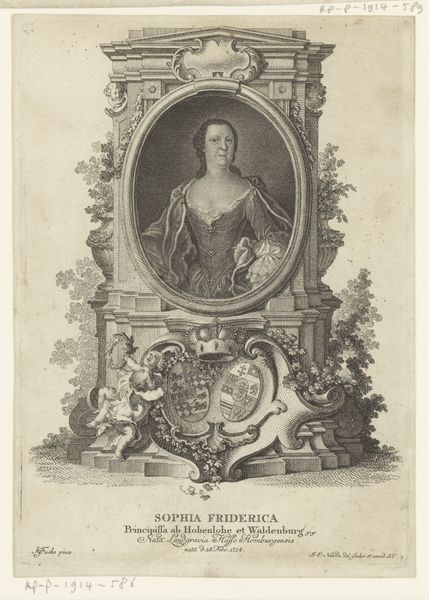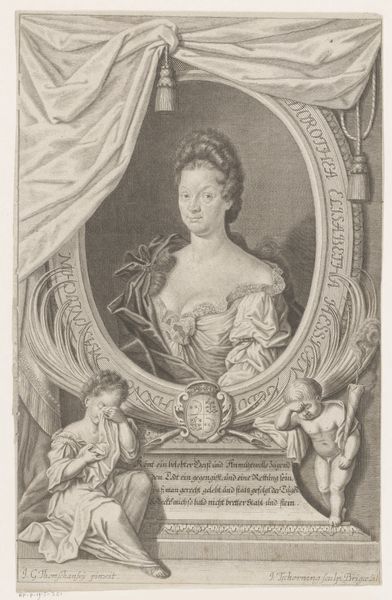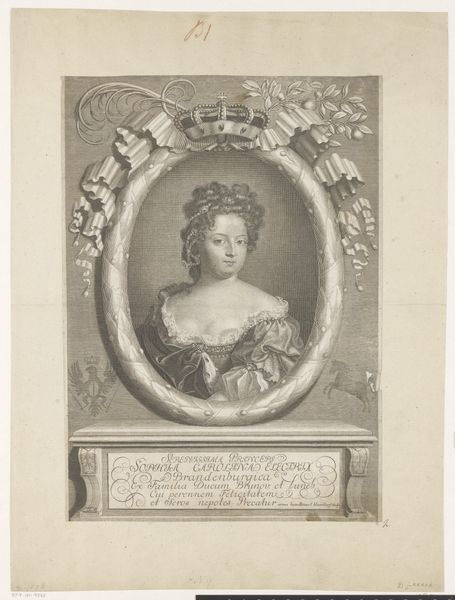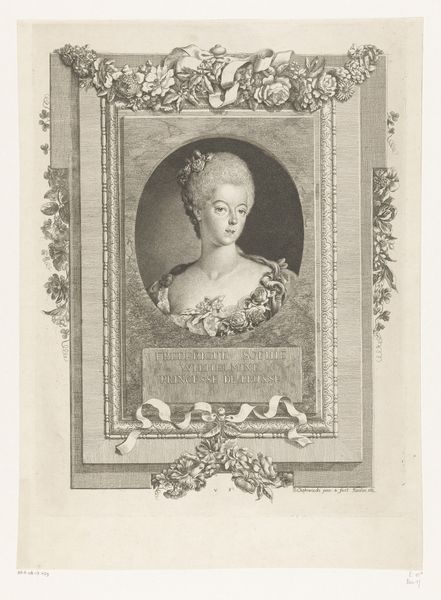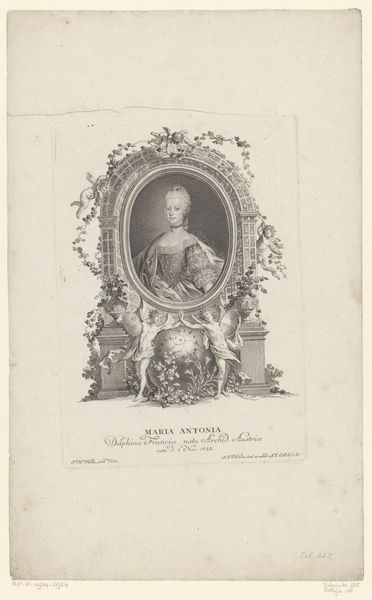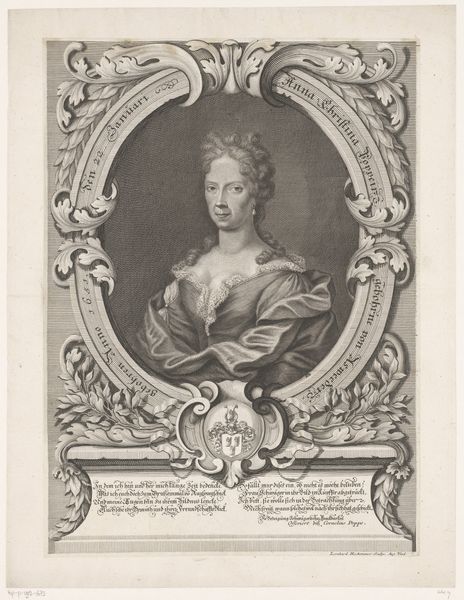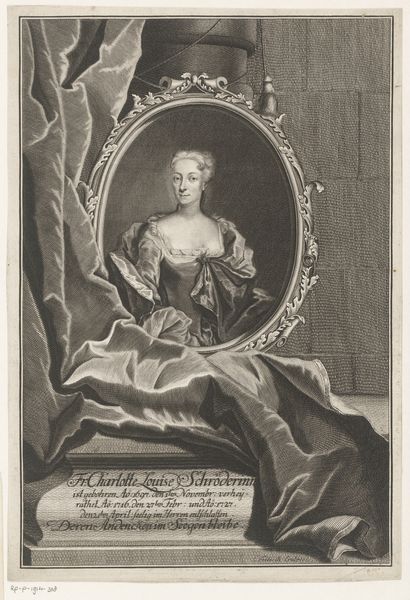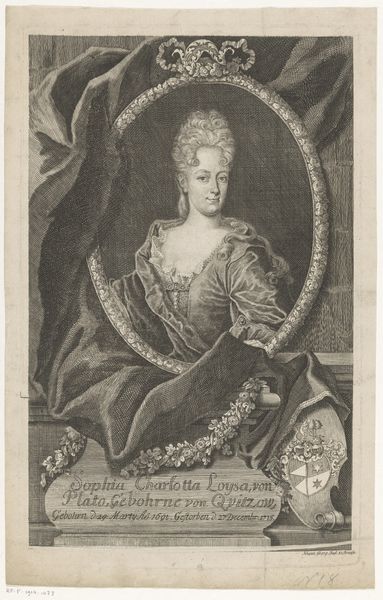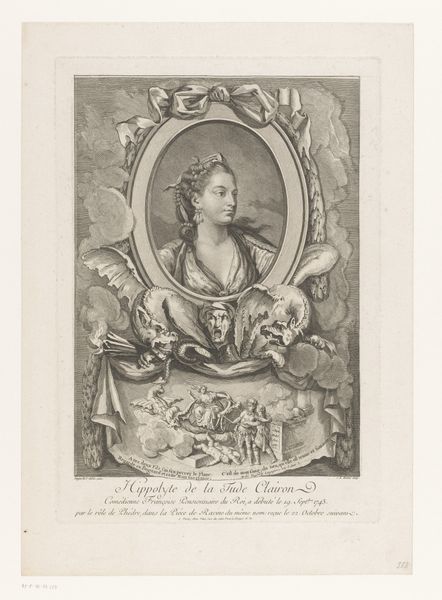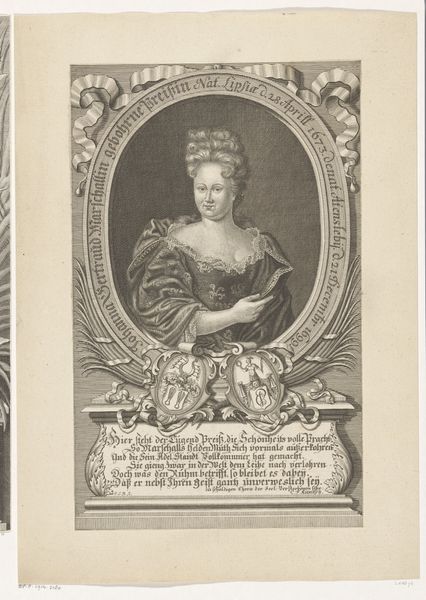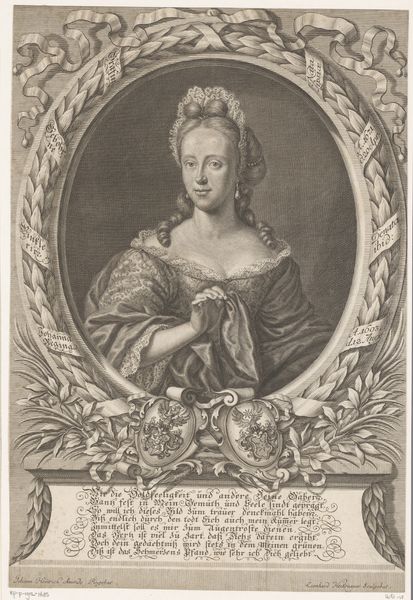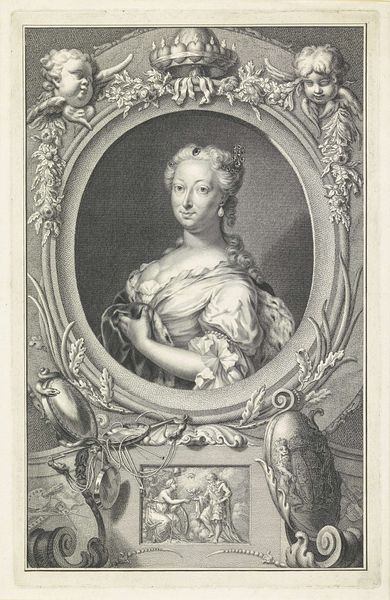
Portrait of Queen Marie-Antoinette in an ornamental frame 1770 - 1788
0:00
0:00
Dimensions: sheet: 8 7/8 x 6 3/16 in. (22.5 x 15.7 cm)
Copyright: Public Domain
Curator: Before us hangs "Portrait of Queen Marie-Antoinette in an ornamental frame" created between 1770 and 1788 by Johann Esaias Nilson. It's an etching and engraving, currently residing here at the Metropolitan Museum of Art. Editor: My immediate impression is one of carefully constructed opulence masking an underlying unease. The delicate lines of the etching can't hide the almost unsettling amount of ornamentation around the central figure. Curator: Indeed, Nilson’s piece provides insight into the politics of imagery at the time. Consider the setting: Marie-Antoinette is enshrined within an elaborate frame, teeming with symbols of wealth and power—cherubs, floral garlands, an ornamental globe… Editor: …which all seems to enforce the visual narrative of royalty by divine right. But consider how women, particularly those in positions of power, were represented and judged then. Her position was precarious, she had a considerable amount of power and wealth, yet her image depended almost entirely on external approval. It feels like she's trapped in this gilded cage. Curator: Precisely. Etchings like this one played a role in constructing the public image of the monarchy, mediating between the court and the populace. This portrait served a dual function, projecting an image of approachable regality while simultaneously reinforcing the inherent distance between the Queen and her subjects. It shaped and reflected socio-political power. Editor: And that framing also feels incredibly gendered. Note how the architectural rigidity of the frame is softened by those overflowing, very feminine, floral details and the cherubs. Is this an attempt to balance Marie Antoinette's political power with accepted, romanticised, images of feminine presentation? The combination makes me deeply question the construction of identity that was forced on female rulers in that period. Curator: I see your point, that Rococo aesthetic can be read as deliberately softening what may have been perceived as the intimidating power of a Queen. I do think though that it is interesting to consider how this image, now detached from its original political context, exists for contemporary audiences. It continues to be evocative and spark new interpretations. Editor: It does. It makes me want to unravel how historical frameworks still affect the ways we represent identity and power today. Curator: And for me it underscores the way art acts as both a mirror reflecting and a stage crafting socio-political dynamics.
Comments
No comments
Be the first to comment and join the conversation on the ultimate creative platform.
